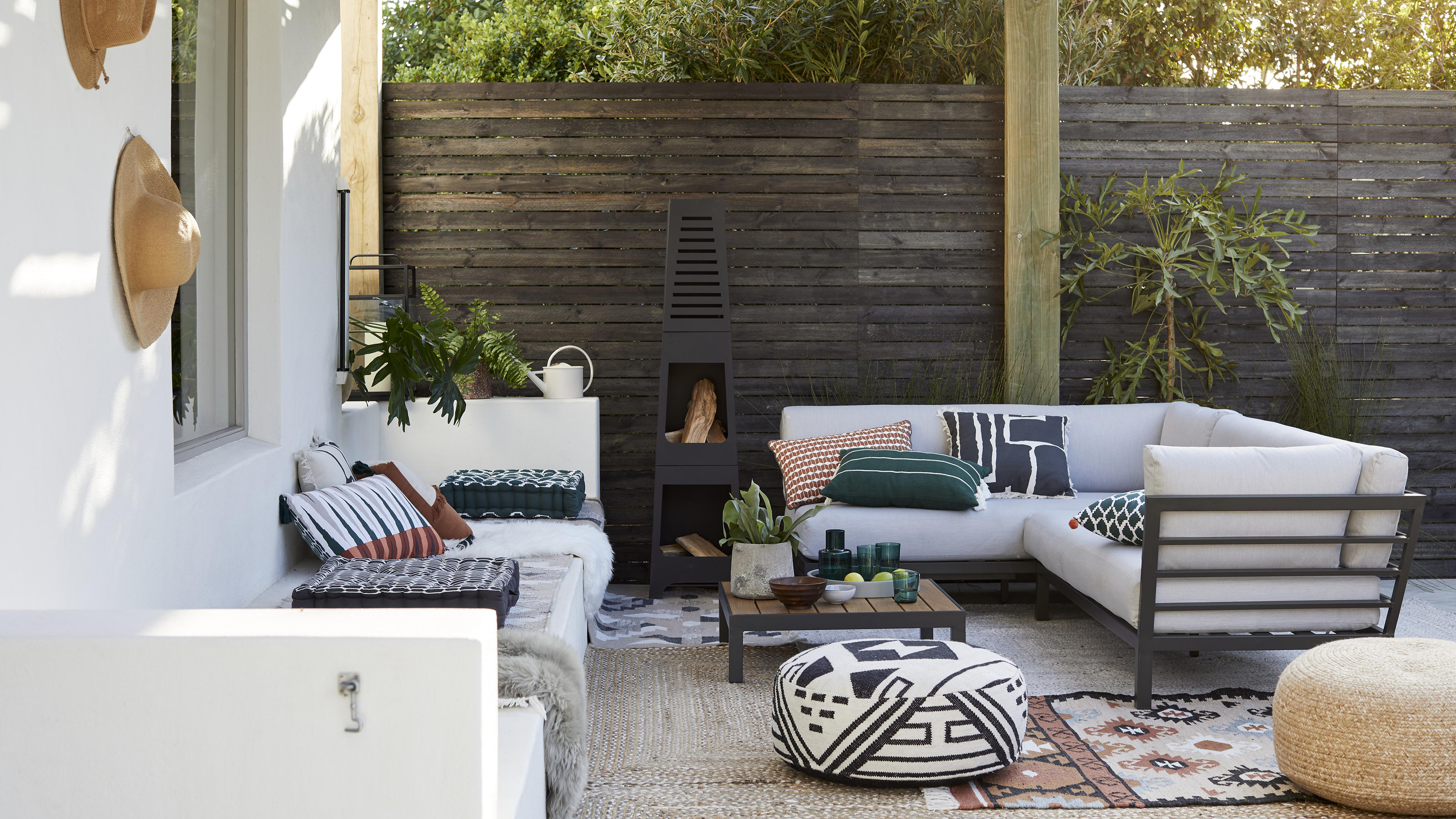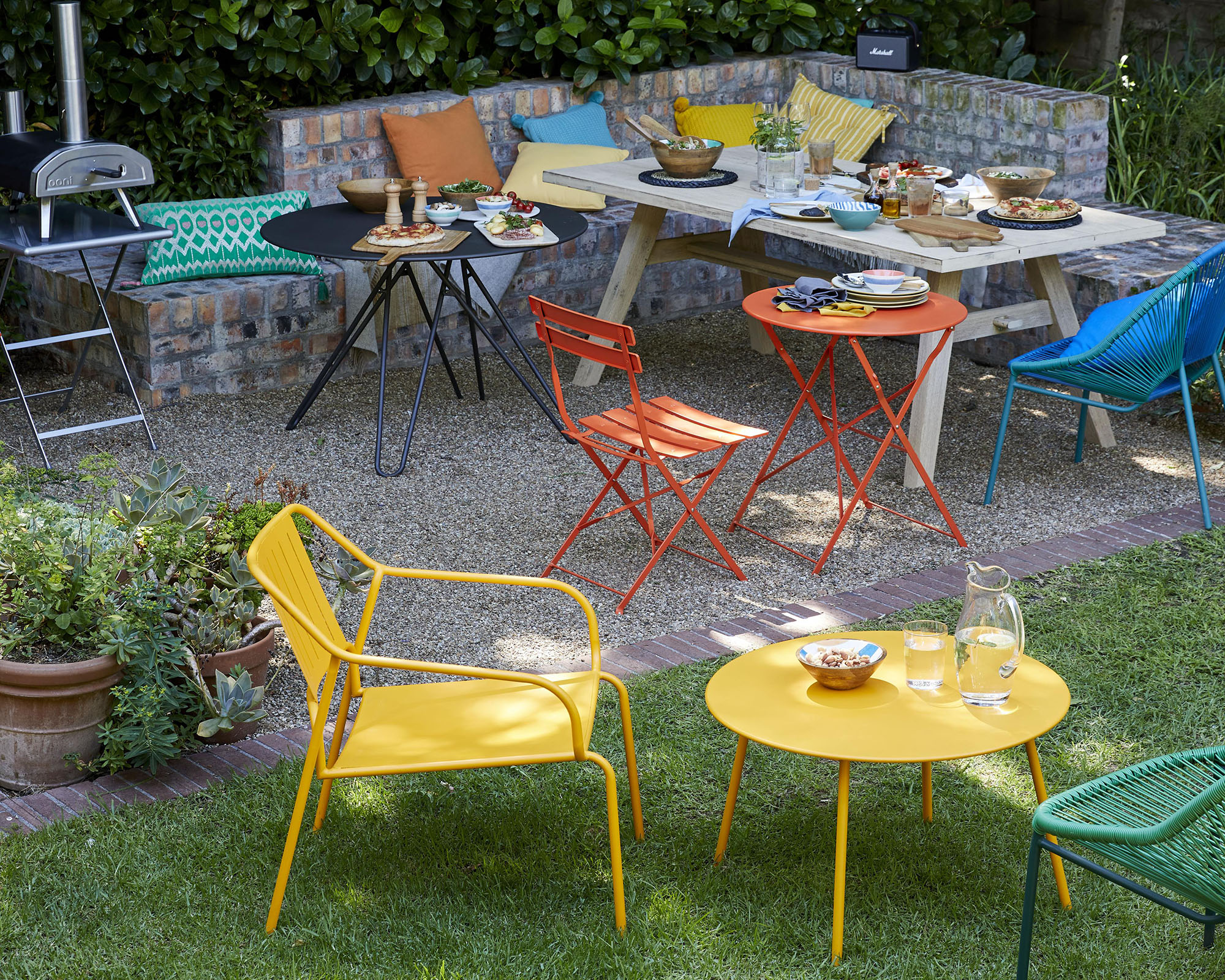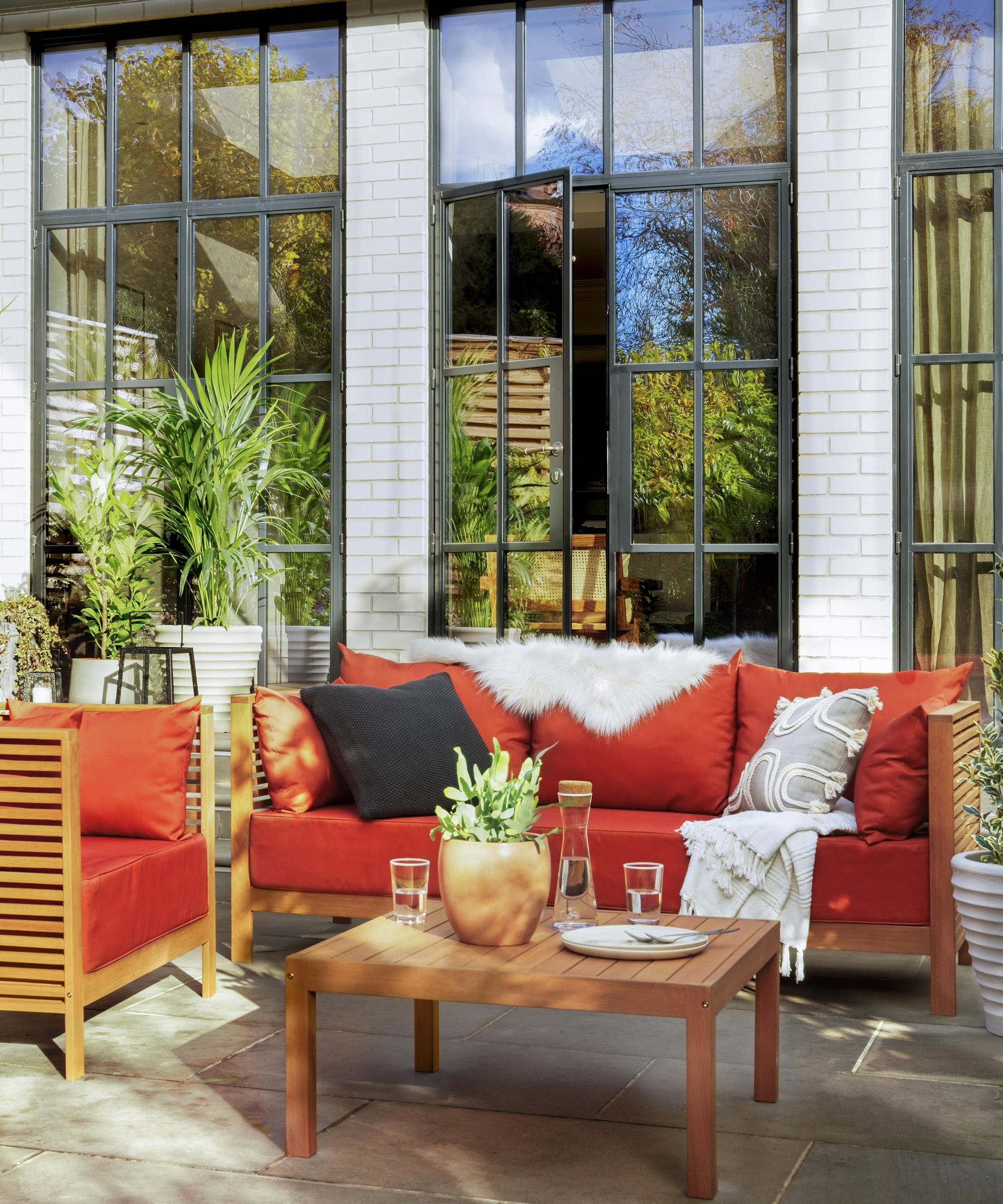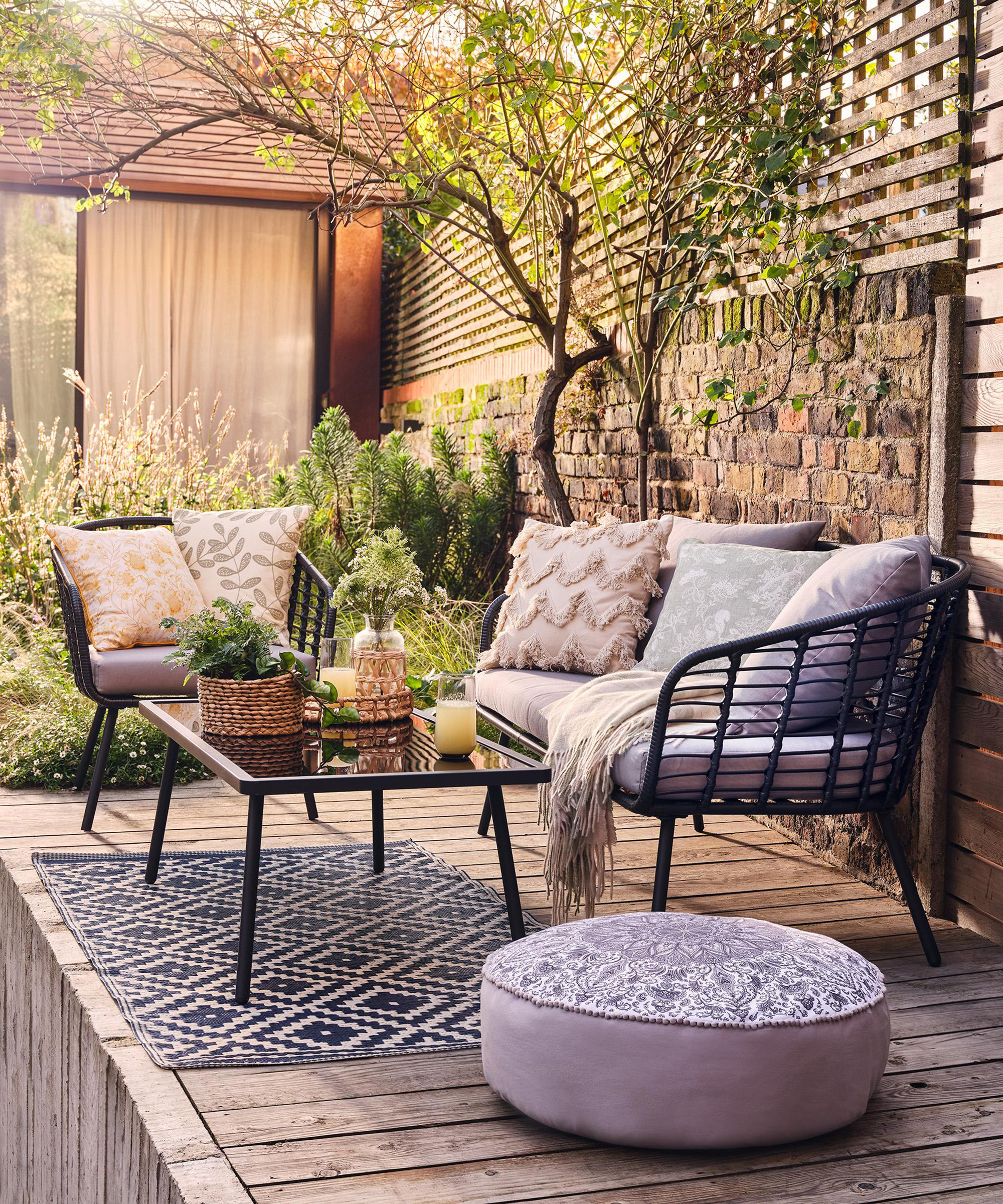How to clean outdoor furniture – 3 simple steps for wood, metal, resin and rattan
Learning how to clean outdoor furniture will improve the condition of your backyard buys with non-eroded and rust-free results.


Want to know how to clean outdoor furniture? Whether the weather is perfect for a picnic outside, or your tables and chairs have become a real eyesore over winter – there's always a right time to remove dirt and debris off of your patio or backyard staples.
You may have spontaneously bought a cheap bistro set or made a decision to buy a new set from one of the best outdoor furniture stores (as rated by us) this year. Whichever you decided on for your exterior space – make sure it looks squeaky clean and hospitable for your guests to enjoy no matter how much you've spent.
From the best garden chairs to outdoor lounge chairs, patio tables, and porch swings, we show you the best way to go about cleaning outdoor furniture. The good news is that it shouldn't take too long before you're able to soak up the sun's rays with a drink and some alfresco nibbles.
How to clean outdoor furniture
'Outdoor furniture is designed for outside use but the weather can be hard on the lawn chairs, benches and tables that make up your patio set,' says Sarah Fishburne, director of trend and design, Home Depot.
'Keep your patio furniture, outdoor cushions, and umbrellas looking great and ensure that they last with basic cleaning and maintenance.'
You'll also want to clean rust from an outdoor grill so you're always ready for a barbecue.
1. Prepare your outdoor furniture surfaces
'Firstly, remove the cushions and soft materials from the frame.' advises Shroopa Patel, category manager, digital merchandising at OnBuy.com.
Get small space home decor ideas, celeb inspiration, DIY tips and more, straight to your inbox!
'If they’re machine washable, go right ahead, but if not you can gently wash them using warm water and a mild washing-up liquid. Now you’re left with just the bare frame.'
'Using a dustpan and brush, sweep away all the debris winter weather brings with it. Cobwebs, leaves, moss, it all needs to go. You can prevent any issues for the future by buying a furniture cover!'
And, if your outdoor cushions are looking a little sorry for themselves, or you just need an excuse to brighten up your backyard, our shopping edit has a colorful collection to suit all schemes. On the other hand, if they're still salvageable, learn how to clean outdoor cushions properly. You can either do this before or after cleaning your outdoor furniture framework.
Ryan Schwarze, head of Luxury Rattan adds: 'We would suggest removing cushions from furnishings when they are not being used but will be out in the sun all day, for example, if you are away on holiday,'
'The sun can bleach colors very easily on a hot day and to keep that new, vibrant look it’s best to store them appropriately when they aren’t in use.'
'When it comes to keeping cushions clean, use warm water with your mild detergent of choice to spot clean non-removable cushion covers. A soft scrubber is preferred to work the stain away before cleaning with a damp cloth. Excess moisture can be absorbed with towels to ensure that as much moisture is absorbed before leaving to dry.'
2. Wipe down your outdoor furniture
Next, mix one of the best washing-up liquids with warm water and use a soft cloth to wipe down the furniture and allow it to soak for a few minutes. Make sure you get into all those nooks and crannies. Avoid using any kind of bleach, even in a mild solution, as it could discolor the furniture.
If you're asking yourself the question 'is outdoor furniture waterproof?', it's good to know that most are, but it's best to check to avoid yours getting damaged (we don't want angry e-mails and post directed at us!)
3. Rinse with a hose
The final step is to rinse the furniture with your best garden hose on a low-pressure setting until all the soap suds have been washed away. Despite their power, the best pressure washers aren't the right tool for the job as they will damage the furniture. Then allow the furniture to dry thoroughly.
Remember, even waterproof garden furniture is only designed to be left out in showers, so you really should bring your furniture indoors during winter. If you don’t have a shed or garage, then invest in waterproof furniture covers from somewhere like Amazon and use rope or bungee cords to tie it down.
Finally, if you've invested in the best wooden garden furniture, it’ll need staining every couple of years. Similarly, the best metal garden furniture might need coating occasionally (psst...If you're feeling creative, we've a whole guide on painting metal garden furniture too).
And when it comes to a metal table and chairs - ketchup isn't just for French fries or Hotdogs as one Cleanfluencer explains.
'Ketchup is so good.' says Lynsey Crombie aka Lynsey Queen of Clean.
'All you have to do is cover the rust patch with some ketchup. You do need to leave it, it’s not going to take five minutes. It’s probably going to take an hour. Then come back and rinse it away.'
So there you have it. This tasty tomato condiment is good for cleaning, and you don't need to buy the branded stuff either, which makes cleaning outdoor furniture cost-effective when we've seen bottles for under $1.
Expert tips to clean outdoor furniture
Patel clearly knows a thing or two about outdoor furniture, so whatever garden ideas you have – she's shared the best ways to get rid of bird poop, cobwebs, mud, and other mucky substances you might find on your fixtures.
Aluminum furniture: Got rust patches from abrasive weather? Here’s a super simple life hack: a mixture of 50% white vinegar and 50% water. Use this to remove rust and blemishes from the frame, making it sparkle in the sunshine. Of course, if you would prefer a store-bought cleaner, that’s fine too. Just be sure it isn’t too acidic as that can actually cause more damage than rust.
Teak furniture: Teak is such a forgiving type of wood for making furniture. No expensive rust, no mold, and it’s easy to clean! The only downside is its color can fade over time, going from brown to a silvery tone. Avoid this by using a varnish painted directly on the wood, once it’s cleaned. If you find super stubborn stains, use fine sandpaper to sand down the area and then re-varnish when you’re happy.
Plastic furniture: Hugely popular, plastic furniture is renowned for being easy to maintain. Impossible to rust and without color fade, the only issue you should really try to deal with is stains. For light stains, the 50% vinegar and 50% water mixture we mentioned earlier should do the trick. For more hardcore stains, use baking soda on a wet sponge and rub in a circular motion until the pesky stain has gone away.
Resin wicker furniture: Often seen as the simplest furniture to look after, resin wicker pieces are UV resistant, rust-resistant, and deal very well with weather extremes. For stains, follow the same process as before! 50% vinegar and 50% water will solve even the hardest baked-on stains, just be sure to be delicate when cleaning.
Iron furniture: Iron garden furniture is big, bold, and strong, making it a perfect centerpiece for any garden party. However, it can be prone to rust, especially if left out all winter without cover. A metal lacquer will solve any rust issues before they’ve even happened, so we definitely recommend buying some and applying them to your iron furniture. If the color has faded, a simple repaint will suffice, leaving you time to get your summer garden party-ready.
'Potatoes contain a compound called oxalic acid which can break down rust on certain metals, such as iron,' adds Andre Knowles, personal finance expert, vouchers.co.uk
'To try it out, cut a raw potato in half then dip the cut side into baking soda before rubbing it onto the rust. If you can see that the rust is removing, keep going and give it some serious elbow grease. You may also need to keep replacing the potato with a new one until the job is done. Once the rust is removed, make sure to thoroughly dry the metal object so that rust doesn’t appear again.'

How to clean metal outdoor furniture
Iron can be quite a heavy garden furniture material, so if you've opted for something lighter and budget-friendly like aluminium, you might be wondering how best to take care of it.
'Aluminium garden furniture won’t rust, but it can suffer from aluminium oxidation,' says Tristan Sissons, garden buying manager, Homebase.
'This will change the color of the metal over time, but won’t affect the strength of it – in fact, it actually makes it stronger. If you want to maintain the original color of your furniture, make sure you clean it regularly, and either store it away or keep it fully covered during the winter months.'
Steel outdoor furniture on the other hand needs a little more attention as Sissons explains: 'If your garden furniture is made of steel, you’ll need to make sure that any scratches that expose the bare metal underneath are treated to prevent rust. If rust has already set in, remove it using some steel wool, then touch up the affected area using an exterior metal paint of the same color.'
'An easy way to extend the life of your metal garden furniture is to polish it with car wax after you’ve finished cleaning it. The wax will make it more water resistant.'
And, Paul McFadyen, managing director at metals4U adds: 'Rust is generally a tough type of corrosion to clean from metal surfaces, and therefore must be treated with the right care as to not damage your furniture.'
'Active corrosion spray can be a very useful product to have in your cupboards especially during the summertime when there is more humidity and heat outdoors. This style of spray can also be bought in colors such as white and will offer high coverage and provide excellent adhesion, even to rust.'

Cleaning wood outdoor furniture
'Wood is a natural product and therefore will produce natural oils,' explains Sisson.
'However, you’ll still need to look after it to make sure it remains in the best possible condition. The way you do that ultimately comes down to a combination of regular care and personal taste.'
When you’ve finished cleaning your furniture, there are three options to consider:
- Let your furniture age naturally: As wood ages it takes on a silver patina look that can be quite attractive. You can preserve this appearance, using a clear hardwood oil for eucalyptus, or teak oil for teak furniture. At least 2 coats should be applied, allowing 48 hours for the oil to dry.
- Have a complete change: Express your individuality by using wood paint to bring a splash of new color to your garden furniture. Apply 2-3 coats of paint to achieve a solid color; and this should last around 3 years with only regular cleaning needed.
- Keep your furniture looking like new: with stained oil.
And, it's not just sun, rain, and snow that can damage your wooden outdoor furniture, so think about your socializing habits too... Especially in the summer as one expert warns:
'If you position your wood furniture around a pool or hot tub, wipe it down with water once a week. As chlorine accumulates, it can gnaw away at the wood’s finish.' says Katie Fritz, content manager, Article.

How to clean outdoor furniture that has a glass top
Using a glass coffee table or dining table outside is a great way to add style to your alfresco eating area. Its wipeable surface makes it super easy to clean sauces and spills should friends or family have a little whoopsie while enjoying a light snack or meal.
'Garden furniture may often have a tabletop made of glass, which can at first seem a daunting prospect in terms of cleaning' says Patel.
'But it is simple enough with the right tools. Once you’ve removed any debris with a cloth or soft brush, a household glass cleaner or white vinegar solution can be sprayed and wiped away.'
'The most important thing to remember with any outdoor glass is to protect it, and keep it covered when not in use. Utilizing table mats and coasters is a great way to add splashes of color and protect your table simultaneously.'
Again, it's best to avoid using a pressure washer, as although the glass on most of these designs is tempered, it can still shatter.
How to clean composite stone outdoor furniture
'There are things you can do to extend the life of your composite stone pieces,' confirms Fritz.
'Adding a cement sealer every three to six months will give your piece that extra protection it deserves. If you notice the temperature dropping, it’s a good idea to bring your piece inside to avoid a natural reaction like cracking.'
'To clean, simply use a soft-bristled nylon brush to wipe away dust and debris. Use the standard pH-neutral soap mixed with warm water to wipe away any dirt or grime, and then let your piece dry naturally before storing.'

How to clean rattan outdoor furniture
Rattan furniture can be a tough one to get right cleaning-wise so you'll want to make sure you're being gentle. One expert has just the thing to add a healthy glow to your garden furniture.
'If you have an old piece of rattan furniture that is looking worse for wear, I would recommend using a soft cloth and rubbing some olive oil onto the product. This will reduce cracking and add shine to your rattan, making it look as good as new,' says Schwarze.
Cleaning outdoor furniture accessories
A patio umbrella is a fine accompaniment to pair with an outdoor table to provide shade and comfort from extreme sun. However, just as it protects you from harmful UV rays, you need to return the favor.
'When it comes to care and storage, it always helps to use common sense and address the risks around you. If a light breeze was enough to whisk Mary Poppins up, up, and away, imagine what one could do to your outdoor umbrella,' questions Fritz.
'Keep your patio umbrella closed when not in use, and store it in a cool, dry place whenever possible.'

How to clean an outdoor rug
The best outdoor rugs are a quick way to add color and texture to your external scheme, and work particularly well in a small garden or courtyard where there's not much space to grow plants. However, just like their indoor counterparts, this furniture decor needs to be treated with care.
'The best way to prevent said grubbiness is by bringing your rug inside whenever you see ugly weather in the forecast,' advises Fritz.
'When your rug is enjoying its time outside, you can remove any loose and dry debris by vacuuming with a non-rotary type attachment and shaking or hitting it with a broom to extract dust.'
'For more stubborn dirt, your rug can handle a good, ol’ fashioned hose down with some mild, pH-neutral soap. Just make sure there’s enough room for ventilation wherever you choose to dry it. If you think it’ll need a bit more than a garden hose facial, feel free to call on the help of a professional rug cleaner.'
And, when it comes to frequency of cleaning this fabric decor, Clare Vallely, brand expert at Kukoon Rugs, lays it down for us.
She says: 'It is always best to clean an outdoor rug monthly, as well as at the start and end of the spring and summer seasons.'
'Cleaning an outdoor rug is simple, you just need a hose, scrub brush, and diluted dish soap. It is important to clean both sides of the rug and leave it to air dry in the sun. If moss or algae form on the rug, you can remove it using diluted bleach or vinegar.'
Outdoor rug still looking like it's heading for the garbage? Being it back to life with a lick of emulsion. Our guide on how to paint an outdoor rug is the perfect upcycling project.
How to store outdoor furniture in winter
Cleaning outdoor furniture is one thing, but when you're not using a bit of elbow grease to eliminate dirt and anything that shouldn't be on it, maintaining the material and protecting it from the elements including water, heat and excessive moisture is just as important.
'We strongly recommend that all garden furniture is stored or covered for winter.' advises Dani Taylor, creative and product director Cox and Cox.
'This will prolong the life of your set and prevent dirt from building up, making your life easier come the spring. If you choose to use a cover, always use a breathable one and ensure your furniture has been cleaned and is completely dry before covering to prevent mildew and mold developing.'
'If stowing indoors, ensure the space is dry, not heated and has a good airflow to prevent moisture from building up.'

When should I cover outdoor furniture?
'A little secret: furniture covers aren’t just for the classic wet-and-windy conditions', says Fritz, Article
'Just like you wear that SPF 100 to protect your own skin, outdoor covers help ward off sun exposure and the associated color fading. They’re also the ultimate bird-poo protectors.'
'Pay attention to the weather forecast. A neutral cloudy day is best for your outdoor furniture, so if you spot any extreme sunshine or rain in the forecast it’s a good idea to throw those covers on.'
Why is my wooden patio furniture turning silver or gray?
'Congrats! Your furniture is developing a beautiful patina,' celebrates Fritz.
'Over time, wooden outdoor furniture will show signs of aging. Teak and acacia develop a silver patina that, like George Clooney’s salt and pepper, just adds to its naughty charm. This is 100% natural and not to be feared. If this is something that really bothers you, most furniture restorers can refinish your pieces to your desired look.'
How can I stop the growth of mildew on my outdoor furniture?
'Common in wood and fabrics in particular, mildew occurs when a material comes in contact with too much moisture for extended periods of time,' explains Fritz.
'Avoid mildew by ensuring your furniture is kept dry and protected. Soak up any spills immediately, make sure natural debris like soggy leaves and pine cones don’t sit on your pieces, don’t store furniture or cushions while they’re still moist, and only store in well-ventilated areas.'
'While mildew isn’t cute, it can usually be removed pretty easily. Wear a mask and gloves while scrubbing your piece with a soft bristle brush and warm water mixed with a pH-neutral soap (like Castile soap). Once cleaned, let your piece dry off completely in the sun.'

Hi, I'm the former acting head ecommerce editor at Real Homes. Prior to working for the Future plc family, I've worked on a number of consumer events including the Ideal Home Show, Grand Designs Live, and Good Homes Magazine. With a first class degree from Keele University, and a plethora of experience in digital marketing, editorial, and social media, I have an eye for what should be in your shopping basket and have gone through the internal customer advisor accreditation process.